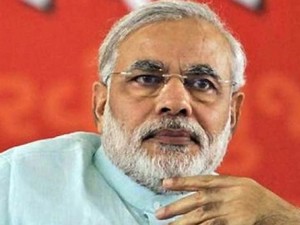India—the world’s largest democratic country—is in the early stages of a parliamentary election that won’t be wrapped up until the last polls close on May 12 (votes will be counted by May 16). India has the world’s largest population after China, and it is a young country with a growing voting-age population. So every Indian election is, by definition, the biggest election in world history. 814 million Indians are eligible to vote this year.

A coalition headed by the Bharatiya Janata Party (“BJP”) and its leader Narendra Modi is expected to win
For the uninitiated, India’s politics can be a little hard to follow. India has a British-style parliamentary system in which the leader of the political party with the highest share of the vote in the lower house of parliament is appointed as prime minister by the president (the President of India is a mostly ceremonial role; the prime minister is the head of government).
India’s system is best explained by comparison. The UK has two major parties—the Conservatives and Labour—and a large third party, the Liberal Democrats. The current Conservative-LibDem government headed by David Cameron notwithstanding, coalition governments are rare in the UK; a single party typically has the majority it needs to govern. But in India, coalitions have been the norm since the 1990s. India’s current government is led by the Congress party, but it is a shifting coalition that has consisted of no fewer than 9 parties and, at various points, more than 20.
Many of these parties are regional or are niche parties with a narrow focus. This, unfortunately, has a way of paralyzing Indian governments by making them beholden to each minority party’s pet cause or special interest group.
What are the issues?
The issues driving this election are government corruption, a stalling economy, and high inflation. Though led by Manmohan Singh—a technocratic figure with a solid track record of pro-growth economic reforms—India’s government has not been effective at promoting growth of late. Last year it was an uninspiring 4.7%. Modi’s BJP party is viewed as being more pro-business, and Modi himself has a reputation as an effective leader who is capable of cutting through bureaucracy.
What are the controversies?
The ruling Congress Party is accused of turning a blind eye to corruption among government officials. The BJP—and Modi in particular—is accused of stirring up animosity between the majority Hindu and minority Muslim populations. Modi has been accused of encouraging violence against Muslims, though these claims are disputed.
Who is likely to win?
Polls point to a Modi / BJP win, though a stronger-than-expected showing by the anti-corruption Aam Aadmi party could complicate the forming of a coalition. Modi will most likely be the next prime minister of India, but his ability to govern effectively will depend on the size of his majority.
What does this mean to investors?
A strong majority for the BJP-led coalition would be welcomed by the financial markets. The BJP—a center-right party roughly similar to America’s Republicans—is viewed as being friendlier to business and less tolerant of official red tape.
Does this mean that you should run out and buy shares of Indian stocks, such as the MSCI India Index Fund (INDA) or the MSCI India Index ETN (INP)? In a vacuum, no. But Indian stocks have been outperforming this year and, in the broad emerging-market bull market that I expect, Indian stocks are worthy of consideration as a part of a broad emerging-market portfolio.

Actively managed funds consistently beat Index funds by a wide margin in markets like India, in some years the outperformance is of the tune of 15%.
Rasesh,
Indeed, you are correct. Active management becomes increasingly valuable the less efficient and liquid a market is, and in an emerging market like India, this is certainly true.
Hope all is well,
CLS